Prints in Collection
| Paper Hat, Mask, Collar, Military Decorations, 1933 IHL Cat. #257 |
Night at Ginza from the series Scenes of Last Tokyo (1945 issue) IHL Cat. #253 | Night at Ginza (1979 re-issue of 1921 version) IHL Cat. #33 | Torii at Kudan from the series Scenes of Last Tokyo,1945 IHL Cat. #55 |
Thistle from the book
Nihon no Hana, 1946
IHL Cat. #603
Ex Libris, Nanban Dining, c. 1950s
IHL Cat. #2024
| IHL Cat. #1523 | Lamps, jars, clock and geisha, c. 1958 IHL Cat. #959 | Timepiece and Lamp, 1971 IHL Cat. #1299 and #2056 |
Timepiece and Lamp [with mug], 1971
IHL Cat. #2066
Biographical Data
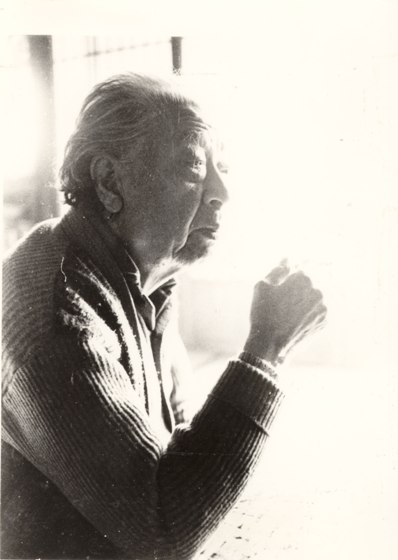 Photo of Artist. c. 1970 | 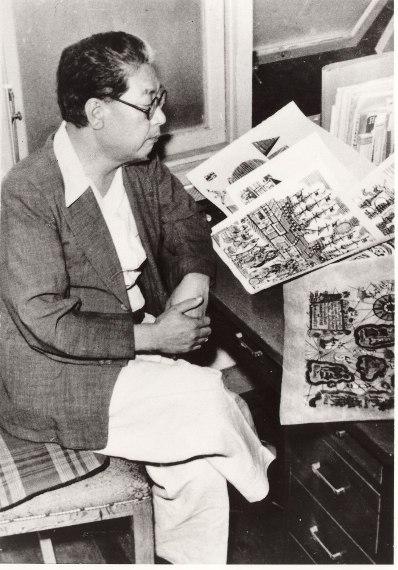 Photo of Artist. c. 1950 |
Biography
Kawakami Sumio 川上澄生 also 川上澄夫 (1895–1972)Source: Images of a Changing World: Japanese Prints of the Twentieth Century, Donald Jenkins, Portland Museum of Art, 1983, p. 97.
A school teacher who made prints in his spare time, Kawakami lived for over 30 years in a small provincial city several hours north of Tokyo. His career followed a highly individual path from the start. After graduating from college, he spent a year in the United States, supporting himself with odd jobs that included house painting in Seattle and a stint in a fish cannery in Alaska. Shortly after returning to Japan he accepted a teaching position in Utsunomiya, which he held for most of the remainder of his life. Though he exhibited with the Japan Creative Society in the early twenties, he knew relatively few of the print artists and was never much influenced by them.
Kawakami was fascinated by the amusing encounters and bizarre misunderstanding that had occurred when the first foreigners arrived in Japan, and this interest is reflected in a great many of his prints. He was a collector of old books – particularly books in English or other foreign languages – and of antique tobacco pipes; and his interest in these also provided him with a rich source of subject matter, as can be seen in the following 1955 print titled Nanbanesque Behavior.
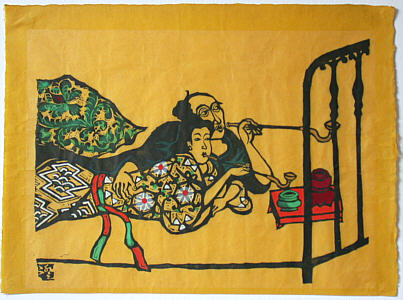
Artist's Quote
Source: Modern Japanese Prints, Oliver Statler, Charles E. Tuttle Company, 1956, p. 93.“I was never much in the swim of things as far as prints were concerned. Since I didn’t live in Tokyo I never knew many of the print artists and never was much influenced by them. I’ve just gone my own way, doing what interested me, and hoping it would interest somebody else. If it has, I’m happy.”
The Kawakami Sumio Art Museum
The Kanuma Municipal Art Museum of Kawakami Sumio , located in central Kanuma of Tochigi Prefecture, is dedicated solely to his works.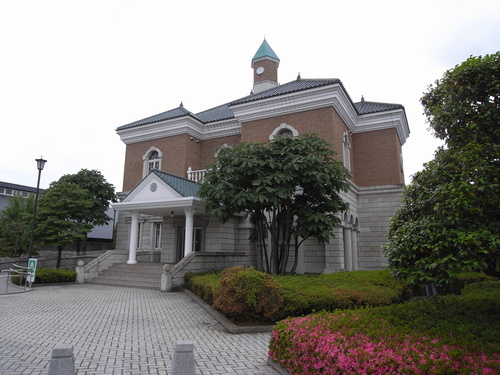 |
| The Kanuma Municipal Art Museum of Kawakami Sumio |
Retrospective Exhibition - Tochigi Prefectural Art Museum
December 7, 2007 through March 2, 2008
Source: http://www.hiroshige.bato.tochigi.jp/batou/hp/2007_exp_e.htmlKnown for his woodblock prints depicting the themes of Western customs and cultural enlightenment, the distinctively brilliant Kawakami Sumio (1895-1972) made his presence felt even among those in the creative woodblock print movement of the Taisho and Meiji Periods. While pursuing higher education at Aoyama Gakuin, Sumio's eyes were opened to the woodblock print. Although he came under the influence of Yokohama-e prints and the work of other artists, the works he generated brim over with poetic sentiment, belying the fact he was mostly self-taught. One thing that drove Sumio to produce these works was a longing for foreign countries, cultural enlightenment, his late mother and the women he loved. Those feelings sometimes took shape as poetry, other times as woodblock prints, eloquently telling us the tale of the artist's inner world.
Although born in Yokohama and raised in Tokyo, because Sumio spent many years in Utsunomiya as an English conversation teacher, teaching school while working on his creative activities, he's an artist with a deep association with Tochigi Prefecture.
This exhibition is part of Artlink Tochigi 2007 (a movement to share the works of the Tochigi Prefectural Art Museum Collection with other museums), and in addition to the woodblock prints that are the main body of his activity, we also introduce his oil paintings, sketches, personal books, glass art, and other items-100 various works spanning a variety of genres, presented in two parts. By tracing the world that Kawakami Sumio could not help but long for, we can get a feel for one part of his creative work.
Examples of Seals used by the Artist
 |  澄 Sumi 澄 Sumi |  澄 Sumi 澄 Sumi |  澄 Sumi |  澄生 Sumio |  澄 Sumi |  澄生刻 carved by Sumio |
 |  |  川上澄生 Sumio Kawakami |
last revision:
8/31/2020
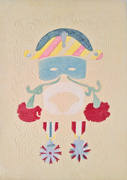
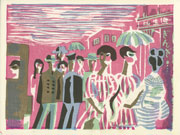
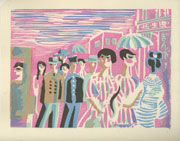

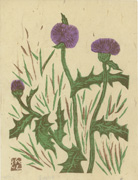

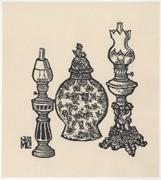

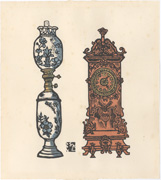
![Timepiece and Lamp [with mug]](kawakami-sumio-1895---1972-/Kawakami Lamp Clock and Mug ihl2066 thumb web.jpg)